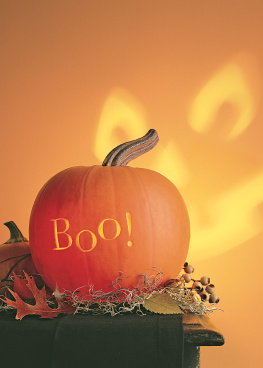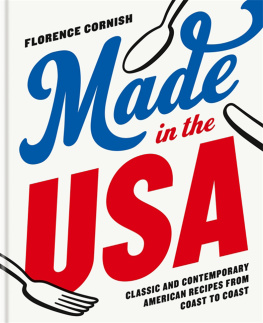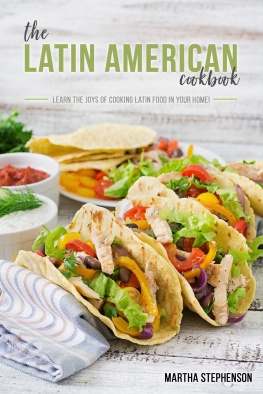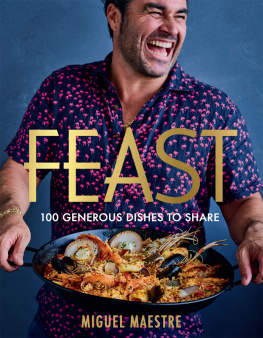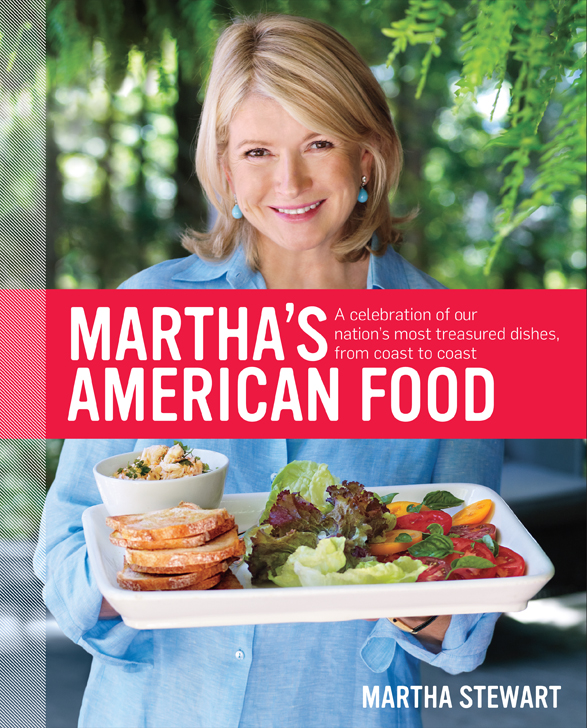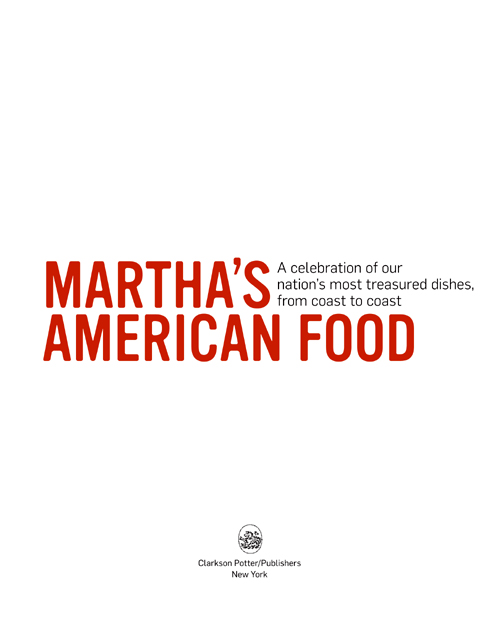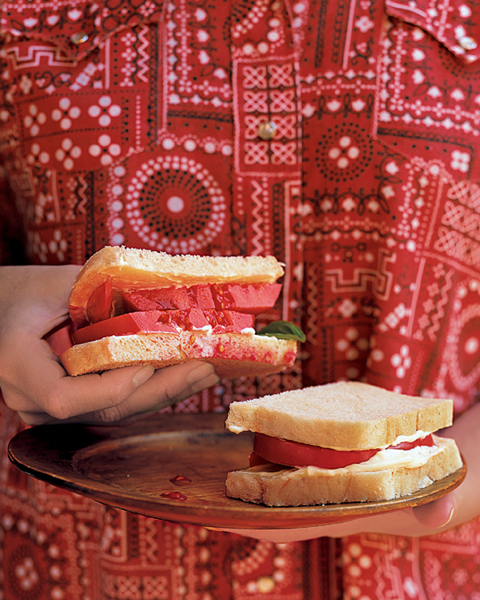
Copyright 2012 by
Martha Stewart Living Omnimedia, Inc.
All rights reserved.
Published in the United States by
Clarkson Potter/Publishers, an imprint
of the Crown Publishing Group,
a division of Random House, Inc., New York.
www.crownpublishing.com
www.clarksonpotter.com
www.marthastewart.com
CLARKSON POTTER is a trademark and POTTER
with colophon is a registered trademark
of Random House, Inc.
Some photographs and recipes originally appeared
in Martha Stewart Living publications.
Library of Congress Cataloging-in-Publication Data
Stewart, Martha
Marthas American Food.1st ed.
1. Cooking, American. 2. Cookbooks. I. Title.
II. Title: American Food.
TX715.S854 2012
641.5973dc23 2011029172
eISBN: 978-0-7704-3297-3
Cover design by William van Roden and
Jessica Blackham
Front cover photograph by Paul Costello
v3.1
To everyone who has generously contributed
to the wonderful cuisine we now
recognize as American




We are thrilled to have consolidated, in this volume, a collection of recipes that we believe are excellent examples of real American food. What exactly can be categorized as American food is open to lively debate. Since before the explorers discovered the bounty and wonders of this continent, Native Americans have been using indigenous, edible species and abundant wildlife for everyday consumption; corn, crab, lobster, oysters, blueberries, cranberries, turkey, tomatoes, potatoes, pumpkins, squash, and so much more were commonly incorporated into their everyday diets. Early settlers readily adapted to these new foods and used them regularly, supplementing what were unknown, unusual, and sometimes peculiar ingredients with their own more familiar flavorings and seasonings.
This book is divided into regions, each with its particular defining features, as you will discover as you peruse the contents and experiment with the very delicious recipes. The challenge in putting it together was to edit the vast numbers of recipes beloved by so many into a manageable compilation of what we consider the best examples of a genre: chowders, pies, chilis, burgers, cobblers, casseroles, salads, and such. Fish chowder in the Northeast, as an example, is a very different soup from the corn chowder of the Southwest, and cioppino from the Northwest will be very distinguishable from the gumbos of Louisiana. Sauces, salsas, muffins, biscuits, sandwichesthere is great variety and much opportunity to experience a memorable trip around America and through time by cooking as many of these recipes as you can. An added bonus are the many recipes for cocktails and non-alcoholic beverages that also highlight the ingenuity and inventiveness of the people who settled here.
The kitchens at Martha Stewart Living are filled with talented and knowledgeable editors who are also excellent recipe developers and food historians. We have all contributed something of what we know and love about American cuisine to this book, and every mouthwatering photograph promises something delightful to serve your families and friends.
I hope you will discover favorites new and old in the following pages. And I hope you read all of the backstories that accompany the recipes. I promise you will learn a great deal about who we are as a vast community held inextricably together by wonderful food.

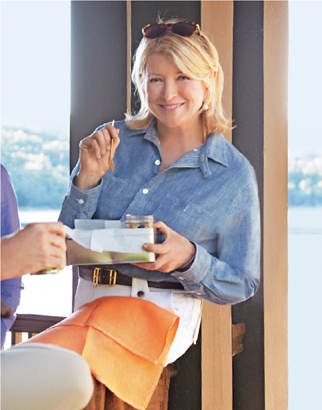


I n the beginning, American cooking was a crazy quilt of cuisines, all stitched together by common ingredients: wild game, pork, fish, chicken, corn, and wheat from local gristmills, and the bounty from carefully tended kitchen gardens. The forthrightness and utter lack of pretension that are found in our countrys earliest cookbooks have echoed through the centuries.
There is still no single, all-encompassing definition of American food, but those same qualities are still true of our quintessential foods today. Meatloaf with a side of creamy, buttery mashed potatoes, the ultimate blue-plate special; a fragrant chicken potpie beneath a burnished pastry crust; an unabashedly generous helping of mac and cheese or juicy, fork-tender pot roast; a tender shortcake piled high with fresh strawberries and sweetened whipped cream; a tall yellow layer cake swathed in chocolate frostingall of these democratic-with-a-small-d dishes spark our appetite, our hunger, whether truly physical or purely metaphorical.
American food has also been influenced by the many immigrant groups that have settled here, each one bringing foods and food memories from their homeland. Pasta, pizza, and artichokes were among the gifts brought by the Italians. Three-bean salad is, in all likelihood, from German settlers; the perfect go with anything side, it was popularized as the salad that men love. And as once-unfamiliar flavors mingled with local tastes and traditions in the various regions, America became a veritable melting pot. Its hard to imagine a time when garlic and spaghetti were considered ethnic ingredients, for instance, or when soy sauce wasnt a staple in kitchens across the land. The end result is an ever-evolving collection of family favorites that transcend regional differences and cross state lines.
The food that is most emblematic of Americas psyche, of course, is the hamburger. Although chopped-meat recipes appear in a Roman cookbook of the second century, and a more recent provenance lay in the minced steak of Hamburg, Germany, the succulent, beefy patties that sizzle on grills and flattops in mom-and-pop diners, off-ramp franchises, temples of haute cuisine, and suburban backyards across the land are an American invention.
Sustenance is found in eating, of course, but it is found in cooking, too. The recipes in this chapter are powerful. They draw you into the kitchen and allow you to revel in the perfection of small, ordinary tasks: hard-cooking eggs for potato salad, making a satiny gravy for the Thanksgiving turkey, creaming butter and sugar for a batch of oatmeal cookies, or whisking pancake batter in your mothers big ceramic bowl. You might have inherited that bowl a long time ago, but the smell of breakfastbacon cooking, the hot griddle, fresh coffeeremains exactly the same. And when you teach your children how to crimp the crust of a deep-dish apple pie and then cut steam vents in the top, odds are you are passing down a tradition learned at the side of your mother or grandmother. And those children will remember more than apple-pie aesthetics; theyll remember the apron they were wearing, your hand sprinkling flour on the work surface, and the stories you tell as you help roll out the dough.


